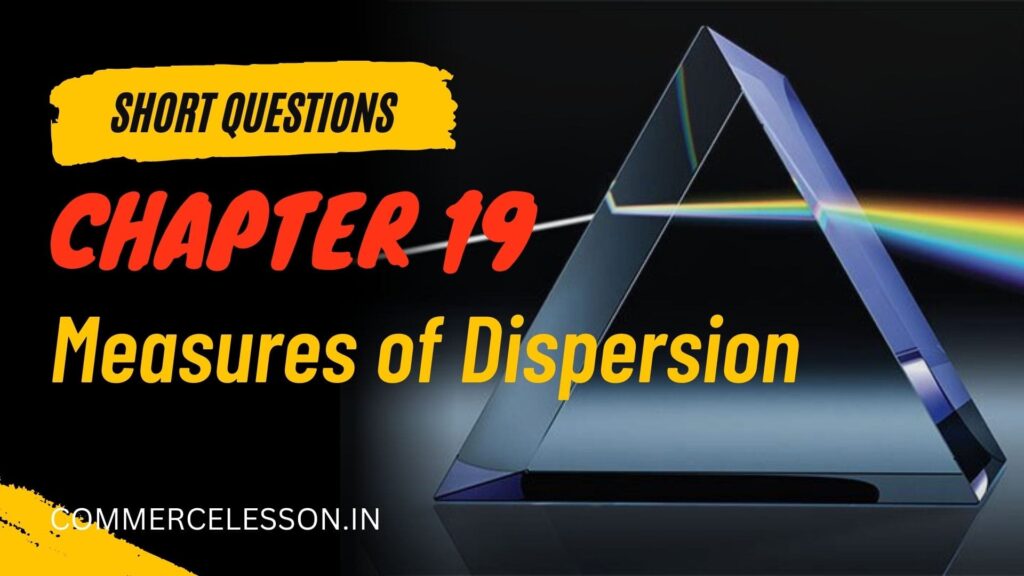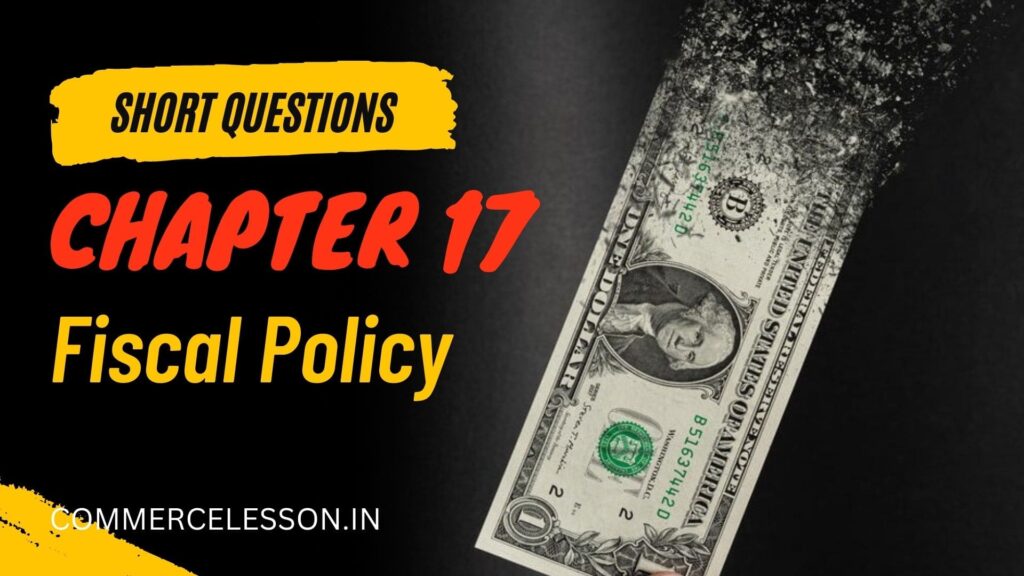[ENGLISH VERSION]
Chapter 2 : Demand [2marks x 1question = 2]
Short Questions from Chapter 2 (2 marks each)
Chapter 3 : Concept of Elasticity [2marks x 1question = 2]
Short Questions from Chapter 3 (2 marks each)
Chapter 4 : Theory of Production [5marks x 1question = 5]
1. Distinguish between Law of Variable Proportions/ Law of Diminishing Marginal Product/ Return to Factors and Returns to Scale.
Answer: Click here
2. Explain the law of returns to scale in production.
Answer: Click here
3. Analyse the relationship involving Total Product (TP), Average Product (AP) and Marginal Product (MP) in three stages of a production process.
Answer: Click here
4. Explain the concepts of internal and external economies arising out of large-scale production.
Answer: Click here
5. Diseconomies/ Disadvantages of large-scale production.
Answer: Click here
Chapter 5 : Cost of Production [(1mark x 1question) + (2marks x 1question) = 3]
Short Questions from Chapter 5 (2 marks each)
Chapter 7 : Profit Maximisation [1mark x 1question = 1]
Multiple Choice Questions from Chapter 7 (1 mark each)
Chapter 10 : Market Equilibrium under Perfect Competition [5marks x 1question = 5]
1. Discuss the long run equilibrium of a firm under perfect competition.
Or, Explain how a firm reaches long run equilibrium in a perfectly competitive market.
Or, Show how a perfectly competitive firm earns only normal profit as it attains long run equilirium.
Answer: Click here
2. Show how the price of a commodity is detremined through the interaction of aggregate demand and aggregate supply in a perfectly competitive market.
Answer: Click here
3. What is a shut-down point? Explain the circumstances under which a perfectly competitive firm reaches such a point.
Answer: Click here
4. Show diagramatically how the price in a perfectly competitive market is affected when –
(i) supply decreases/ increases with demand remaining unchanged.
(ii) demand decreases/increases with supply remaining unchanged.
Answer: Click here
Chapter 13 : Factor Market [5marks x 1question = 5]
1. Explain why the individual supply curve of labour is backward bending.
Answer: Click here
2. Rent exist in other factors of production- Discuss.
Answer: Click here
3. Discuss briefly the Modern Theory of Rent/Economic Rent.
Answer: Click here
4. Distinguish between Ricardian theory of rent and Modern theory of rent.
Answer: Click here
5. Marginal Productivity theory – Assumptions.
Answer: Click here
6. Critically evaluate the Marginal Productivity Theory of Distribution.
Answer: Click here
7. What according to Keynes, are the three motives for Holding Money/ Liquidity Preference Theory of interest.
Answer: Click here
Chapter 14 : National Income [5marks x 1question = 5]
1. Discuss the value-added method of measuring national income of a country.
Answer: Click here
2. Explain how national income is obtained as the sum total of incomes of the factors of production.
Or, Discuss the income-census method of measuiring national income.
Answer: Click here
3. Explain, with a diagram, the concept of circular flow of income.
Answer: Click here
4. Explain the difference between Gross National Income at market price and Gross National Income at factor cost.
Answer: Click here
Chapter 16 : Banking System [5marks x 1question = 5]
1. Discuss the functions of Commercial Banks.
Answer: Click here
2. Give a brief account of the different methods of credit control by the Central Bank.
Answer: Click here
3. State the differences between Central Bank and Commercial Bank.
Answer: Click here
Chapter 18 : International Trade [5marks x 1question = 5]
1. Distinction between Balance of Trade and Balance of Payments.
Answer: Click here
2. Show the difference between Current account and Capital Account in Balance of Payments.
Answer: Click here
3. Discuss the different components on the credit side and on the debit side of balance of payments of a country.
Answer: Click here
4. When does deficit occur in a balance of payments? What measures can be adopted to remove deficits in balance of payments of a country?
Answer: Click here
5. How is the equilibrium exchange rate determined under the flexible exchange rate system?
Answer: Click here
6. Balance of Payments always balances – Explain.
Answer: Click here
Chapter 19 : Measures of Dispersion [5marks x 1question = 5]
1. Standard Deviation Sum.
Chapter 20 : Poverty, Inequality and Unemployment [5marks x 1question = 5]
1. Describe the causes of income inequalities in India.
Answer: Click here
2. State the measures adopted to reduce the inequality of income in India.
Answer: Click here
3. What are the causes of persistence of poverty in India?
Answer: Click here
4. Briefly mention the measures adopted by the government to increase employment opportunities in India.
Answer: Click here
[BENGALI VERSION]
দ্বিতীয় অধ্যায় : চাহিদা [2 নম্বরের 1টি প্রশ্ন = 2]
দ্বিতীয় অধ্যায় থেকে ছোট প্রশ্ন (2 marks each)
চতুর্থ অধ্যায় : উৎপাদন তত্ত্ব [5 নম্বরের 1টি প্রশ্ন = 5]
১। পরিবর্তনীয় অনুপাতের নিয়ম/ ক্রমহ্রাসমান প্রান্তিক উৎপাদনের নিয়ম/ উপাদানের উৎপাদন ক্ষমতা ও মাত্রাবৃদ্ধির প্রতিদানের নিয়ম/ প্রতিদানের মাত্রার মধ্যে পার্থক্য।
উত্তরঃ- Click here
২। উৎপাদনের মাত্রা বৃদ্ধিজনিত প্রতিদানের নিয়মটি ব্যাখ্যা করো।
উত্তরঃ- Click here
৩। উৎপাদন প্রক্রিয়ায় তিনটি স্তরে, মোট, গড় ও প্রান্তিক উৎপাদনের মধ্যে সম্পর্ক পর্যালোচনা করো।
উত্তরঃ- Click here
৪। বৃহদায়তন উৎপাদনের ফলে উদ্ভূত অভ্যন্তরীণ এবং বাহ্যিক ব্যয়সংকোচের ধারণাগুলি ব্যাখ্যা করো।
উত্তরঃ- Click here
৫। বৃহদায়তন উৎপাদনের ব্যয়বাহুল্য বা বৃহদায়তন উৎপাদনের অসুবিধা।
উত্তরঃ- Click here
দশম অধ্যায় : পূর্ণ প্রতিযোগিতামূলক বাজারে ভারসাম্য [5 নম্বরের 1টি প্রশ্ন = 5]
১। পূর্ণ প্রতিযোগিতার বাজারে একটি ফার্মের দীর্ঘকালীন ভারসাম্য অবস্থা আলোচনা করো।
অথবা, পূর্ণ প্রতিযোগিতার বাজারে একটি ফার্ম কীভাবে দীর্ঘকালীন ভারসাম্য অর্জন করে ব্যাখ্যা করো।
অথবা, দেখাও কীভাবে পূর্ণ প্রতিযোগিতার বাজারে একটি ফার্ম দীর্ঘকালীন ভারসাম্য অবস্থায় পৌঁছে শুধুমাত্র স্বাভাবিক মুনাফা অর্জন করে।
উত্তরঃ- Click here
২। দেখাও কীভাবে পূর্ণ প্রতিযোগিতার বাজারে মোট চাহিদা ও মোট জোগানের ঘাত প্রতিঘাতের মাধ্যমে একটি দ্রব্যের দাম নির্ধারিত হয়।
উত্তরঃ- Click here
৩। উৎপাদন বন্ধের বিন্দু কী? কোন অবস্থায় একটি পূর্ণ প্রতিযোগিতামূলক ফার্ম এই বিন্দুতে পৌঁছায় তা ব্যাখ্যা করো।
উত্তরঃ- Click here
৪। চিত্রসহ আলোচনা করো কীভাবে পূর্ণ প্রতিযোগিতামূলক বাজারে দাম প্রভাবিত হয় যখন (i) চাহিদা স্থির থেকে জোগান হ্রাস/বৃদ্ধি পায় এবং (ii) জোগান স্থির থেকে চাহিদা হ্রাস/বৃদ্ধি পায়।
উত্তরঃ- Click here
ত্রয়োদশ অধ্যায় : উৎপাদনের বাজার [5 নম্বরের 1টি প্রশ্ন = 5]
১। শ্রমের ব্যক্তিগত জোগান রেখা পশ্চাৎমুখী হয় কেন তা ব্যাখ্যা করো।
উত্তরঃ- Click here
২। যেকোনো উৎপাদনের উপাদানের আয়ের মধ্যে কীভাবে খাজনার অংশ থাকতে পারে ব্যাখ্যা করো।
উত্তরঃ- Click here
৩। অর্থনৈতিক খাজনা/ আধুনিক খাজনা তত্ত্বের ধারনা দাও।
উত্তরঃ- Click here
৪। রিকার্ডোর খাজনা তত্ত্ব ও আধুনিক খাজনা তত্ত্বের মধ্যে পার্থক্যগুলি আলোচনা করো।
উত্তরঃ- Click here
৫। বন্টনের প্রান্তিক উৎপাদনশীলতা তত্ত্বের অনুমানগুলি আলোচনা করো।
উত্তরঃ- Click here
৬। বন্টনের প্রান্তিক উৎপাদনশীলতা তত্ত্বটির সমালোচনামূলক মূল্যায়ন করো।
উত্তরঃ- Click here
৭। কেইন্সের মতে নগদ অর্থ হাতে রাখার তিনটি উদ্দেশ্য ব্যাখ্যা করো/ নগদ পছন্দ তত্ত্বটি আলোচনা করো।
উত্তরঃ- Click here
চতুর্দশ অধ্যায় : জাতীয় আয় [5 নম্বরের 1টি প্রশ্ন = 5]
১। কোনো দেশের জাতীয় আয় পরিমাপের মূল্য সংযোগ পদ্ধতিটি আলোচনা করো।
উত্তরঃ- Click here
২। উৎপাদনের উপাদানগুলির আয় যোগ করে কীভাবে জাতীয় আয় পাওয়া যায় ব্যাখ্যা করো।
অথবা, জাতীয় আয় পরিমাপের আয়-সুমারী পদ্ধতিটি সংক্ষেপে আলোচনা করো।
উত্তরঃ- Click here
৩। আয়ের বৃত্তস্রোতের ধারণাটি একটি চিত্রের সাহায্যে ব্যাখ্যা করো।
উত্তরঃ- Click here
৪। বাজার দামে মোট জাতীয় আয় এবং উপাদান ব্যয়ে মোট জাতীয় আয়ের মধ্যে পার্থক্যটি ব্যাখ্যা করো।
উত্তরঃ- Click here
ষোড়শ অধ্যায় : ব্যাংক ব্যবস্থা [5 নম্বরের 1টি প্রশ্ন = 5]
১। বাণিজ্যিক ব্যাংকের কার্যাবলী আলোচনা করো।
উত্তরঃ- Click here
২। কেন্দ্রীয় ব্যাংকের বিভিন্ন ঋণ নিয়ন্ত্রণ পদ্ধতিগুলির একটি সংক্ষিপ্ত বিবরণ দাও।
উত্তরঃ- Click here
৩। কেন্দ্রীয় ব্যাংক এবং বাণিজ্যিক ব্যাংকের মধ্যে পার্থক্য উল্লেখ করো।
উত্তরঃ- Click here
অষ্টাদশ অধ্যায় : আন্তর্জাতিক বাণিজ্য [5 নম্বরের 1টি প্রশ্ন = 5]
১। বাণিজ্য উদ্বৃত্ত ও লেনদেন উদ্বৃত্তের মধ্যে পার্থক্য দেখাও।
উত্তরঃ- Click here
২। লেনদেন ব্যালান্সের হিসাবে চলতি খাত ও মূল্ধনী খাতের মধ্যে পার্থক্য দেখাও।
উত্তরঃ- Click here
৩। লেনদেন ব্যালান্সের হিসাবে পাওনার দিক ও দেনার দিকের অন্তর্ভুক্ত বিভিন্ন বিষয়গুলি আলোচনা করো।
উত্তরঃ- Click here
৪। কখন লেনদেন উদ্বৃত্তে ঘাটতি দেখা দেয়? কোনো দেশের লেনদেন উদ্বৃত্তে ঘাটতি দূর করার জন্য কী কী ব্যাবস্থা গ্রহণ করা যেতে পারে?
উত্তরঃ- Click here
৫। নমনীয় বিনিময় হার ব্যবস্থায় কীভাবে ভারসাম্য বিনিময় হার নির্ধারিত হয়?
উত্তরঃ- Click here
৬। “লেনদেন ব্যালেন্সে সকল সময়েই সমতা থাকে” – ব্যাখ্যা করো।
উত্তরঃ- Click here
ঊনবিংশ অধ্যায় : বিস্তৃতির পরিমাপক [5 নম্বরের 1টি প্রশ্ন = 5]
১। সমক পার্থক্য বা বিচ্যুতির অংক
বিংশ অধ্যায় : দারিদ্র্য, বৈষম্য ও বেকারি [5 নম্বরের 1টি প্রশ্ন = 5]
১। ভারতে আয় বৈষম্যের কারণগুলি বর্ণনা করো।
উত্তরঃ- Click here
২। ভারতে আয় বৈষম্য হ্রাসের জন্য যেসব ব্যবস্থা গ্রহণ করা হয়েছে সেগুলির উল্লেখ করো।
উত্তরঃ- Click here
৩। ভারতে দারিদ্র্য বজায় থাকার কারণগুলি কী কী?
উত্তরঃ- Click here
৪। ভারতে কর্মসংস্থান বৃদ্ধির জন্য সরকার যে সমস্ত ব্যবস্থা গ্রহণ করেছে সেগুলি সংক্ষেপে উল্লেখ করো।
উত্তরঃ- Click here
Liked our post?
We are available with lots and lots of commerce-related content.





[…] Economics Suggestions 2023 […]